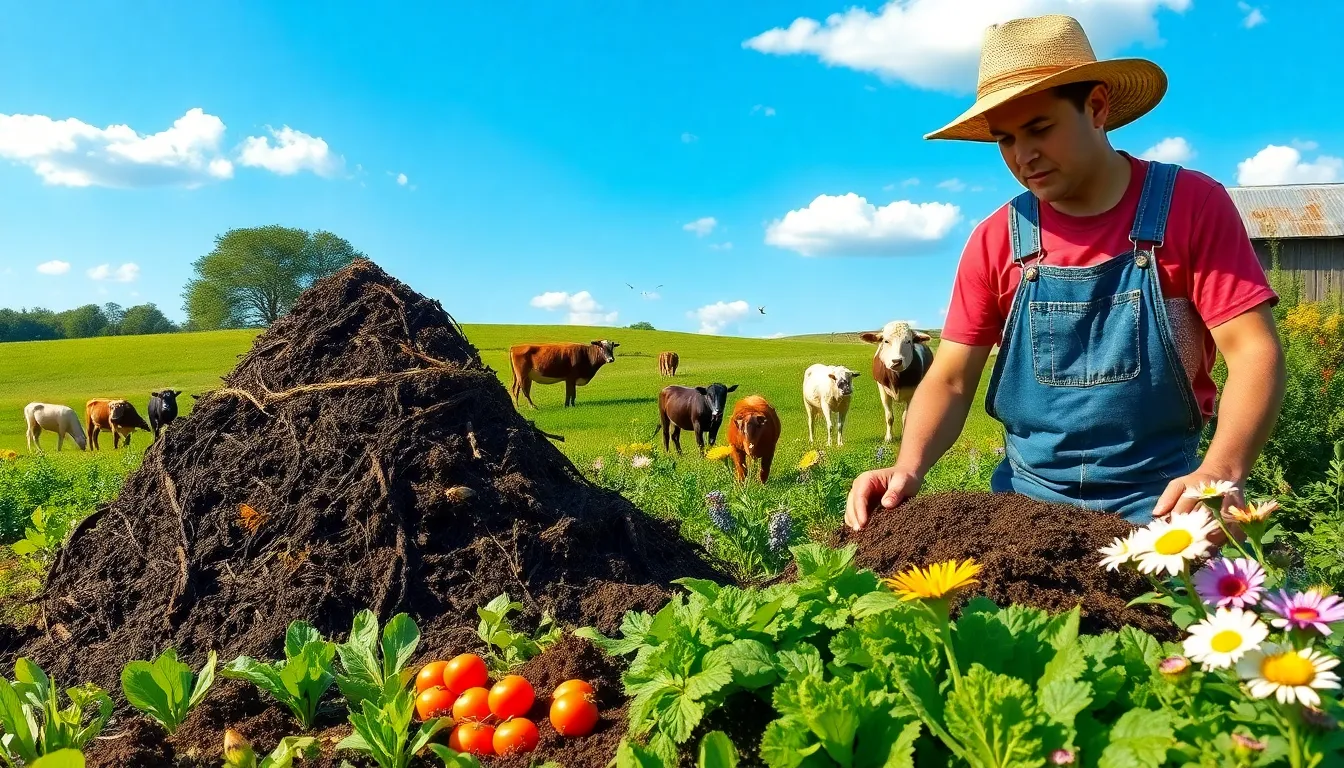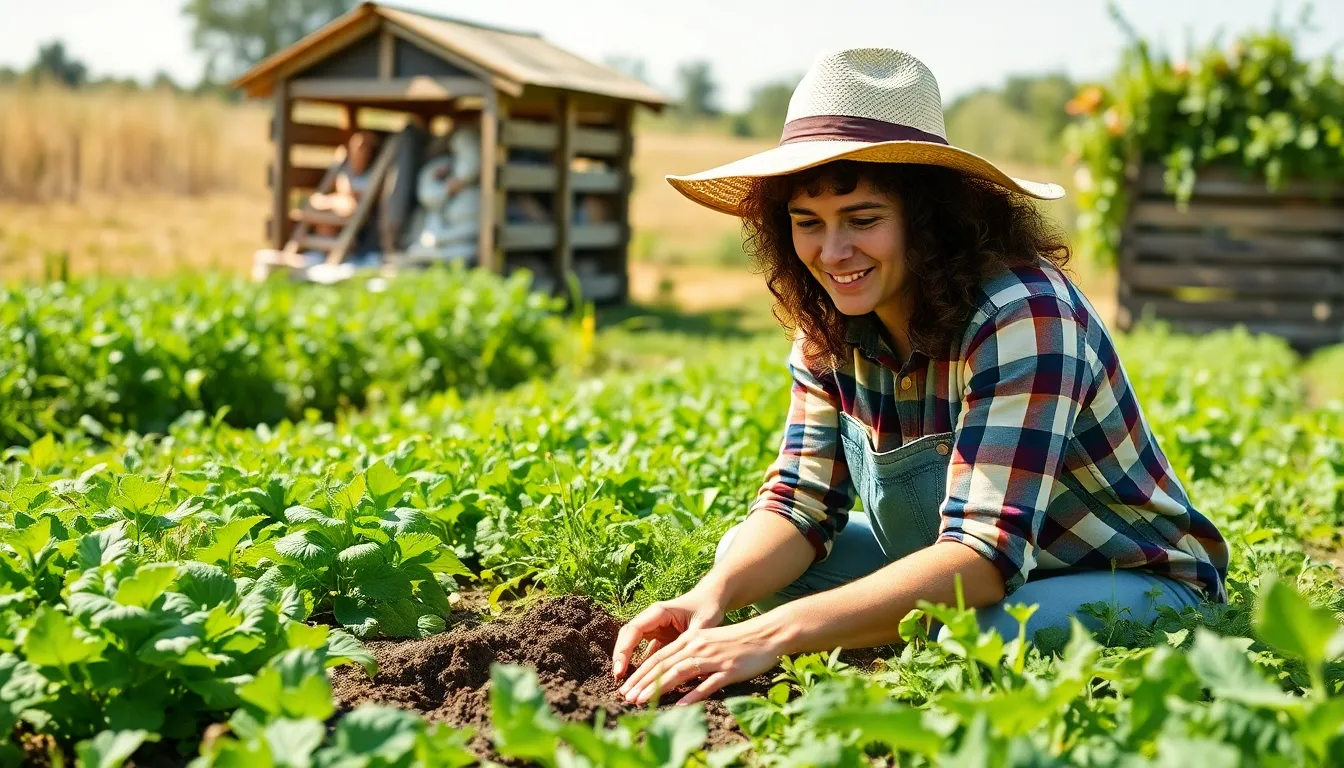Table of Contents
ToggleBiodynamic farming is more than just an agricultural method; it’s a holistic approach that emphasizes the interconnectedness of soil, plants, animals, and humans. Rooted in the teachings of Rudolf Steiner, this practice integrates organic farming principles with spiritual and ecological insights. Farmers who adopt this method strive to create a self-sustaining ecosystem that enhances biodiversity and soil health.
By using natural preparations and following lunar cycles, biodynamic farmers aim to cultivate not only healthy crops but also a vibrant agricultural community. This innovative approach has gained traction among environmentally conscious consumers and farmers alike, who recognize the importance of sustainable practices in today’s world. As interest in organic and sustainable food systems grows, biodynamic farming stands out as a compelling option for those seeking to nurture both the land and their communities.
What Is Biodynamic Farming?
Biodynamic farming is a comprehensive agricultural method that integrates ecological, spiritual, and ethical dimensions. It emphasizes the interconnectedness of soil, plants, animals, and humans, forming a self-sustaining ecosystem.
History of Biodynamic Farming
Biodynamic farming began in 1924 when Rudolf Steiner delivered a series of lectures on holistic agriculture. His insights laid the foundation for this method, incorporating spiritual principles with agricultural practices. The first biodynamic farms emerged in Germany and quickly spread across Europe and North America. In 1938, the Biodynamic Farming and Gardening Association (BDFGA) formed in the U.S., promoting these practices further. Today, the movement continues to grow, influencing sustainable agriculture worldwide.
Key Principles of Biodynamic Farming
Biodynamic farming incorporates several essential principles:
- Holistic Approach: It views the farm as a closed ecosystem, where all elements—plants, animals, and soil—work in harmony.
- Biodiversity: It promotes crop diversity and livestock integration, enhancing resilience against pests and diseases.
- Soil Health: It uses compost and natural preparations to enrich the soil, fostering microbial life.
- Lunar Cycles: It aligns planting and harvesting with lunar rhythms, believing that celestial influences affect plant growth.
- Spiritual Insight: It embraces the idea that spiritual and ethical considerations play a role in agricultural practices.
These principles exemplify a commitment to sustainable agriculture, enhancing soil vitality and promoting environmental stewardship.
Benefits of Biodynamic Farming

Biodynamic farming offers numerous advantages for the environment and human health, promoting a sustainable agricultural model that nurtures ecosystems and communities.
Environmental Benefits
Biodynamic farming enhances environmental health by maintaining soil quality and improving biodiversity.
- Soil Health: Biodynamic practices involve composting and natural preparations that enrich soil, leading to higher nutrient content.
- Biodiversity: Farmers cultivate a diverse range of crops and integrate livestock, fostering a rich ecosystem that supports various species.
- Pest Management: Natural pest control methods reduce reliance on synthetic chemicals, mitigating harmful environmental effects.
- Water Conservation: Effective water management techniques minimize runoff and promote efficient water use, conserving this vital resource.
- Carbon Sequestration: Healthy soils in biodynamic farms capture carbon, contributing to climate change mitigation efforts.
Health Benefits
Biodynamic farming promotes healthier food and well-being for consumers.
- Nutrient-Rich Food: Biodynamic produce often contains higher levels of essential nutrients, benefiting overall health.
- Reduced Chemical Exposure: By avoiding synthetic fertilizers and pesticides, consumers experience lower exposure to harmful residues.
- Balanced Ecosystem Presence: Biodynamic farms support a diverse habitat, which encourages pollinators essential for crop health and productivity.
- Community Health: Local food production strengthens community ties and enhances food security, fostering healthier dietary options.
- Holistic Well-Being: The spiritual and ecological practices of biodynamic farming contribute to mental and emotional well-being, promoting a deeper connection to the food system.
Practices in Biodynamic Farming
Biodynamic farming integrates various practices aimed at enhancing the farm’s ecological balance and productivity. Key techniques include soil management, crop rotation, and fostering biodiversity.
Soil Management Techniques
Soil management in biodynamic farming relies on enhancing soil fertility and structure through natural amendments. Farmers use biodynamic preparations made from herbs, minerals, and animal manure to stimulate microbial activity, improve nutrient availability, and strengthen soil health. Key methods include:
- Composting: Farmers create nutrient-rich compost using plant material, kitchen scraps, and animal manure, promoting microbial growth and bolstering soil vitality.
- Cover Crops: Farmers plant cover crops like clover and vetch during off-seasons to prevent soil erosion, suppress weeds, and enhance soil structure.
- Mulching: Farmers apply organic mulches made from straw or wood chips to retain soil moisture, regulate temperature, and suppress weed growth.
- Biodynamic Preparations: Farmers incorporate specific herbal infusions, such as yarrow or chamomile, to enrich soil microbial communities and encourage nutrient cycling.
Crop Rotation and Biodiversity
- Diverse Crop Selection: Farmers cultivate a variety of crops, including fruits, vegetables, and grains, to enhance biodiversity and provide habitat for beneficial organisms.
- Seasonal Rotations: Farmers rotate crops each season, alternating deep-rooted plants with shallow-rooted varieties, which optimizes nutrient uptake and minimizes soil depletion.
- Intercropping: Farmers practice intercropping by planting multiple crops in proximity to maximize resource use and minimize pest pressure, leading to healthier yields.
- Livestock Integration: Farmers incorporate livestock, such as chickens and sheep, to naturally fertilize fields and manage weeds, creating a balanced ecosystem that supports both plant and animal health.
Challenges of Biodynamic Farming
Biodynamic farming faces several challenges that impact its widespread adoption. Economic considerations and adoption barriers play significant roles in determining its feasibility and success.
Economic Considerations
Economic challenges significantly impact the viability of biodynamic farming. Initial startup costs often exceed those of conventional farming due to the need for specific inputs and hands-on management techniques. Equipment, certification, and labor costs can strain budgets. Furthermore, market access presents difficulties, as many consumers remain unaware of biodynamic products. Pricing can also be higher, limiting competitive advantage in price-sensitive markets. A lack of financial support or incentives from governments further complicates the situation, hindering farmers’ transitions to biodynamic practices.
Adoption Barriers
Adoption barriers hinder the growth of biodynamic farming. Knowledge gaps exist, as many farmers lack training in biodynamic methods, limiting successful implementation. Existing agricultural policies often favor conventional practices, creating systemic disadvantages for biodynamic operators. Additionally, consumers may find it challenging to recognize biodynamic products, which can impede market demand. Misunderstandings about the methods and principles of biodynamic farming may lead to skepticism. These barriers contribute to a slower adoption rate, despite its potential benefits for sustainability and health.
Biodynamic farming represents a transformative approach to agriculture that champions ecological balance and sustainability. By fostering a deep connection between soil, plants, animals, and humans, it not only enhances biodiversity but also cultivates nutrient-rich food. As the movement gains traction among consumers and farmers alike, its principles resonate in the quest for healthier food systems.
While challenges exist in terms of economic viability and market awareness, the potential benefits of biodynamic practices are significant. Embracing this holistic method can lead to improved environmental health and community well-being. As more individuals recognize the value of biodynamic farming, it could play a crucial role in shaping the future of sustainable agriculture.







